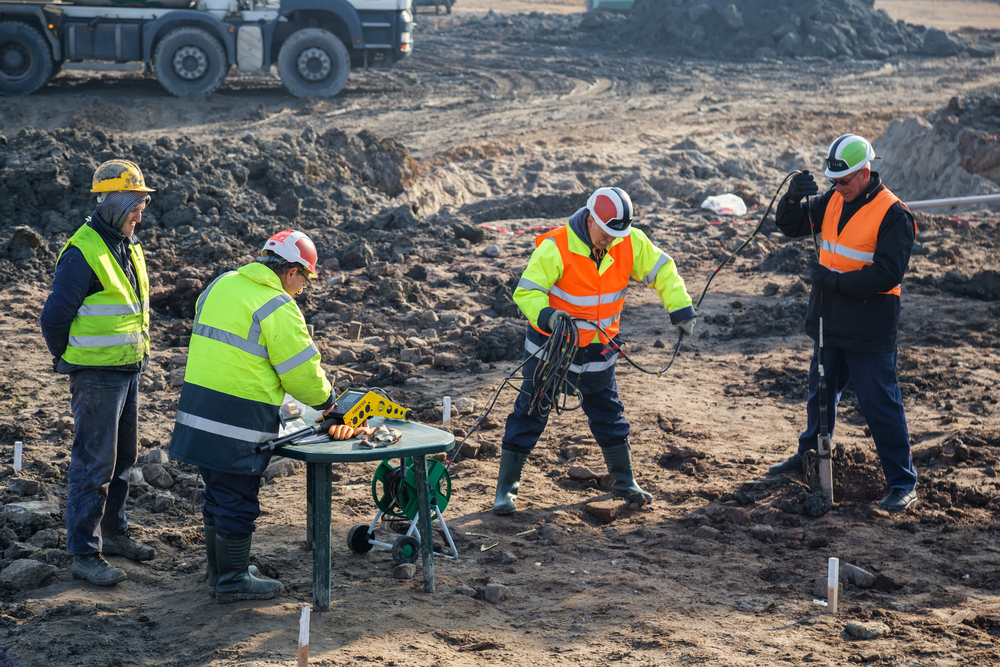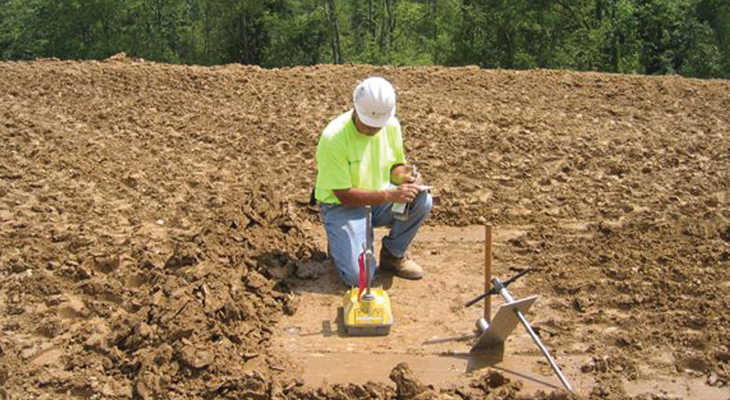Picking the Right Geotechnical Engineers for Your Next Large-Scale Task
Picking the Right Geotechnical Engineers for Your Next Large-Scale Task
Blog Article
Discovering the Ingenious Methods and Technologies Shaping the Future of the Geotechnical Sector for Lasting Design Solutions
The geotechnical sector is going through a transformative change, driven by cutting-edge techniques and modern technologies that highlight sustainable design remedies. Advanced dirt stablizing techniques, the use of smart products, and the application of data analytics are redefining exactly how we come close to facilities obstacles.
Advanced Dirt Stabilization Strategies
Dirt stablizing is an essential procedure in geotechnical engineering, targeted at improving the physical homes of soil to boost its load-bearing capacity and toughness. Advanced dirt stablizing techniques play an essential duty in resolving challenges connected with weak or unpredictable soils, thereby allowing safe and reliable construction practices.
Amongst the noticeable techniques, chemical stablizing involves using additives such as lime, cement, or fly ash, which react with soil particles to form a much more natural mass. This strategy is specifically effective in improving the stamina and wetness resistance of large clay dirts. Mechanical stabilization, on the other hand, includes the physical alteration of soil properties with compaction or the consolidation of granular materials, bring about enhanced thickness and security.
An additional innovative approach is making use of geosynthetics, which give reinforcement and reduce soil disintegration while improving water drainage. Strategies like dirt mixing and deep dirt stabilization are additionally obtaining grip, permitting in-situ treatment of problematic soils. Collectively, these innovative approaches not just enhance the efficiency of soil frameworks but also add to lasting engineering practices by decreasing the requirement for extensive excavation and material transport.
Smart Products in Geotechnics
Innovation is at the leading edge of geotechnical design, especially with the incorporation of wise products that boost the performance and performance of dirt structures. Smart products, such as shape memory alloys, piezoelectric products, and self-healing polymers, are changing the method designers approach soil stabilization and infrastructure long life (geotechnical engineers). These materials can adapt to changing environmental problems, reply to stress and anxiety, and also fix themselves, dramatically boosting the strength of geotechnical systems
For circumstances, piezoelectric products can generate electrical charges in action to mechanical stress, supplying prospective for real-time surveillance of soil problems and architectural honesty. Self-healing materials can autonomously fix damages and fractures, reducing upkeep expenses and extending the life-span of geotechnical properties. The combination of these clever products not just boosts the mechanical residential properties of soil however additionally adds to lasting engineering practices by minimizing resource intake and environmental impact.
As the geotechnical market remains to progress, the fostering of smart materials will play a crucial role in establishing cutting-edge services, guaranteeing that facilities are not just durable however additionally versatile to future difficulties. This transformative method is positioned to redefine the standards of safety and performance in geotechnical engineering.
Information Analytics for Infrastructure
The combination of wise products in geotechnical design has actually led the way for advanced approaches, specifically in the world of information analytics for facilities. This ingenious strategy leverages comprehensive information collection and logical techniques to boost decision-making processes throughout the infrastructure lifecycle. By making use of sensors embedded in smart materials, designers can continually monitor critical parameters such as dirt stability, moisture levels, and structural honesty.
Information analytics makes it possible for the improvement of raw information right into actionable insights, allowing for predictive upkeep and boosted threat management. Advanced formulas and artificial intelligence strategies help with the identification of patterns and anomalies, which can maximize and notify prompt interventions resource appropriation. In addition, incorporating geographic details systems (GIS) boosts spatial evaluation, more enriching the decision-making framework.
By taking advantage of the power of information analytics, the geotechnical industry is positioned to not just boost current methods but additionally pioneer ingenious options for future framework difficulties. This harmony of technology and engineering concepts will certainly define the future of lasting framework development.

Sustainable Ground Enhancement Methods
Numerous sustainable ground enhancement methods are arising as vital solutions to attend to the challenges of geotechnical design while decreasing environmental effect. These techniques not just improve soil performance however also promote ecological stewardship Read More Here by minimizing dependence on typical, a lot more invasive strategies.

An additional innovative technique is the application of geosynthetics, that includes eco-friendly materials that reinforce dirt while advertising check my blog drain and disintegration control - tailings engineer. This minimizes the requirement for heavy machinery and reduces website disruption, hence protecting regional ecological communities
On top of that, methods such as dynamic compaction and vibro-replacement have actually developed to consist of lasting methods, integrating recycled materials and minimizing carbon impacts. These approaches exemplify the sector's change in the direction of more environmentally liable solutions, guaranteeing that ground improvement not just satisfies design requirements yet additionally adds favorably to the surrounding atmosphere.
Advancements in Ecological Surveillance
In recent times, innovations in ecological tracking have actually considerably enhanced the capability to evaluate and handle geotechnical jobs with minimal eco-friendly disruption. Innovative modern technologies, such as remote picking up, Net of Points (IoT) gadgets, and real-time information analytics, are transforming just how ecological impacts are determined and alleviated.
Remote picking up modern technologies, consisting of satellite images and air-borne LiDAR, assist in the quick assessment of land usage adjustments and ecological conditions - geotechnical engineers. These tools permit constant surveillance of websites, making it possible for designers to recognize prospective problems before they intensify. In addition, IoT gadgets, outfitted with sensing units for specifications like soil moisture, temperature level, and gas emissions, provide real-time data streams that boost the understanding of site-specific ecological variables
Real-time data analytics further improve decision-making processes by integrating data from different resources, enabling positive administration methods. This all natural method not just ensures conformity with environmental regulations however also advertises lasting techniques within the geotechnical industry.
As these technologies remain to advance, they hold the potential to connect the void in between engineering purposes and ecological stewardship, promoting a more sustainable future for geotechnical tasks worldwide.
Final Thought
To conclude, the geotechnical market is undergoing a transformative evolution driven by innovative methods and modern technologies that prioritize sustainability. Advanced dirt stabilization methods, the integration of clever products, and the application of data analytics collectively improve the resilience and efficiency of facilities. Moreover, sustainable ground enhancement techniques and innovations in ecological monitoring underscore the industry's dedication to ecological stewardship. These developments not Resources only address contemporary engineering obstacles yet also lead the way for an extra lasting future in geotechnical techniques.
Techniques like soil mixing and deep dirt stabilization are likewise obtaining traction, allowing for in-situ therapy of problematic soils. Collectively, these innovative methods not just enhance the efficiency of dirt structures but likewise contribute to lasting design techniques by lessening the requirement for comprehensive excavation and product transport.

Report this page